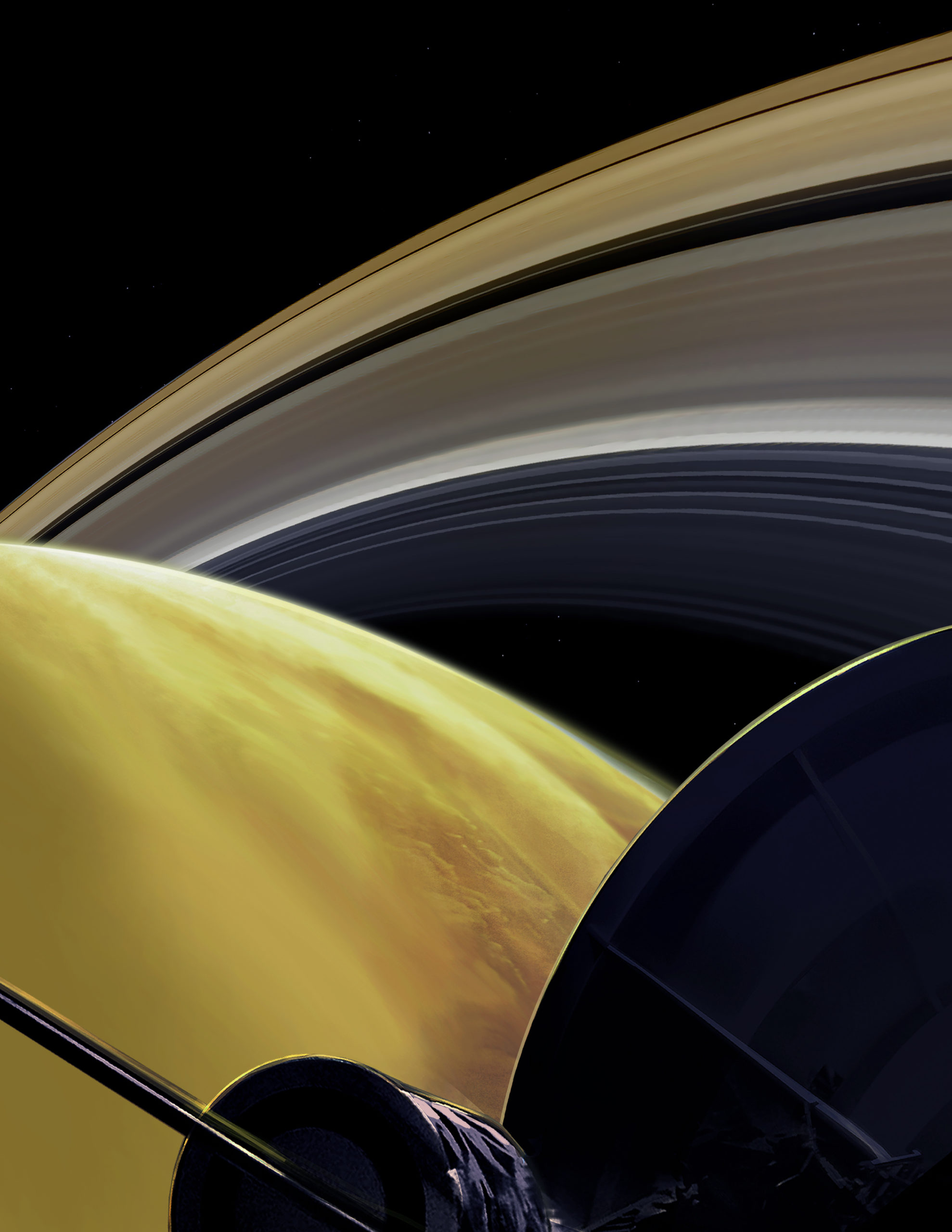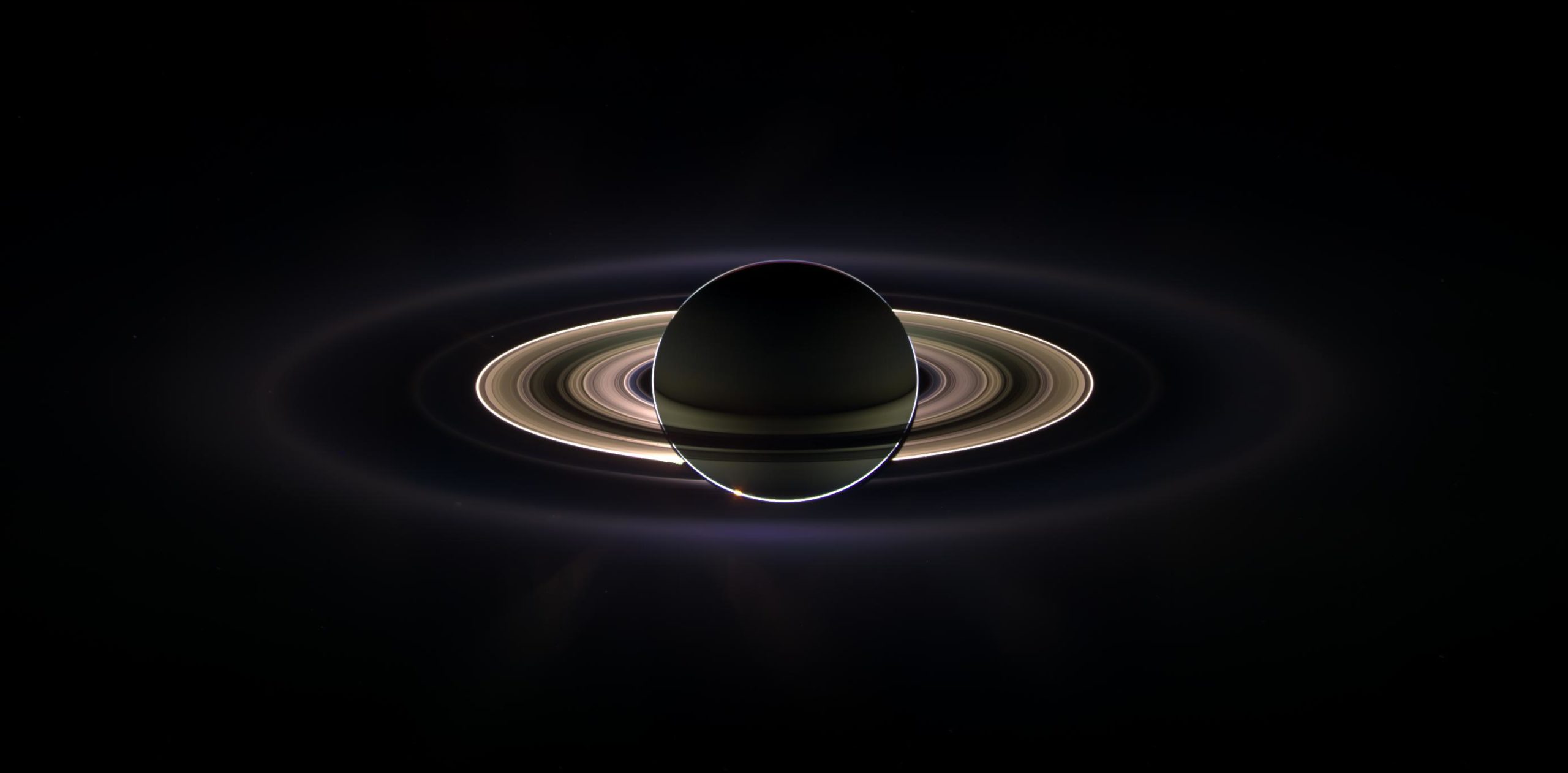Earth is exhausting — excruciatingly so, if you’re a young curmudgeon like me. At times, performing even the most mundane tasks, like commuting on a crowded, smelly subway car, feels like an Olympic marathon designed to test one’s patience. Space compels us because it forces us to think outside this myopic view of ourselves — not in a “Dust in the Wind” way, but in the sense that we’re tiny flecks of star stuff lucky to be members of something so vast and incredible.
Image: NASA
And in recent years, one of the greatest reminders of this is the volume of research and images sent back to Earth from NASA’s Cassini spacecraft, which first entered Saturn’s system in 2004.
In the 20 years it’s spent in space, this intrepid orbiter has enabled the publication of over 3,000 scientific reports. Cassini’s unprecedented views of Saturn and its 62 moons are widely regarded as some of the most sublime images from space — it’s shown us methane lakes on Titan, the gaps in Saturnian rings and even pasta moons that seem too delicious to be real.
But after a decades-long Saturnian sojourn, the spacecraft is running out of fuel — so on April 23rd, it will embark on its Grand Finale mission before plunging into Saturn’s atmosphere on September 15th.

Image: NASA-JPL
This five-month-long farewell tour is perhaps the most dramatic and heart-wrenching of Cassini’s missions. Kicking off with a final Titan flyby this weekend, the spacecraft will perform 22 weeks of dramatic dives into the never-explored region between the planet and the rings, beaming scientific data back to Earth throughout.
Even as it plunges into Saturn’s atmosphere, Cassini will be sending information about the end of its life until it can’t. While we’re expecting incredible new insights into the gas giant, including some ultra-precise measurements of its gravity and magnetic field, among those who’ve followed the mission closely, there’s a profound sadness as Cassini’s final act draws near.
“There’s a sense of loss,” Earl Maize, Cassini project manager at JPL, said earlier this month at a NASA press conference. “We, humankind, have been at Saturn for 13 years. You can get up in the morning, get the weather report, see what the images look like … we are connected, and we’ve connected the entire planet. That’s going to go away … and unfortunately, there’s not a substitute for that for some time.”
Indeed, the world has been along for the entirety of Cassini’s wild ride. On its Twitter alone, the orbiter has garnered 1.19 million followers. Some of Cassini’s major discoveries, most recently the discovery of molecular hydrogen in Enceladus’ ocean, trended on Twitter and validated extraterrestrial enthusiasts.
Even the spacecraft’s thousands of routine image dispatches have engaged people from around the world, who can check in any time on Cassini’s NASA page or on social media. Countless space enthusiasts will feel a Saturn-shaped void in their hearts when these regular postcards suddenly stop.
For reporters who’ve followed the mission closely, writing about Cassini’s discoveries and incredible images, there’s an added layer of loss.
“At the end of the day we have to all be grateful for the generations of science we’ve received from Cassini,” science journalist Shannon Stirone told Gizmodo. “Knowing the hundreds of hands who’ve touched the mission, thinking about all of those people makes my heart hurt, though. Humanity loses a lot when a mission like Cassini ends. It will be a sad day no doubt. I will cry.”

View of Saturn, taken by Cassini on February 3, 2016. (Image: NASA-JPL)
That said, not all Cassini fans are ready to mourn.
“I think it is too early to eulogise Cassini on the occasion of its death, as incineration is five months away,” Jonathan Lunine, director of the Cornell Center for Astrophysics and Planetary Science, said in a statement. “Between now and September, there will be a ton of new science on what’s inside Saturn, how much the rings weigh, and amazing detail on rings, ring-moons and atmosphere — all made possible by these tight, ‘proximal’ orbits.”
On April 12th, just weeks before it’d enter its final phase, Cassini sent back a photo of Earth from within Saturn’s rings. Our Pale Blue Dot looks like nothing more than a tiny white spot, accompanied by an even smaller white speck, our Moon. To me, this image encapsulates why everyone from astronomers to average citizens has been entranced by Cassini for so long: it’s a stark reminder of what we think we are versus what the universe knows us to be.
The sum of our lives, even the boring stuff, can often feel like a world in and of itself. But what Cassini has literally shown us is that in the grand scheme of the solar system, we’re still that tiny little dot. While that might sound nihilistic, the flip side is that Cassini helps us understand that we’re members of something bigger than ourselves, bigger than Earth, even.
In fact, the spacecraft’s discoveries may have laid the groundwork for a future missions to answer the biggest question of all — whether or not we’re alone.
